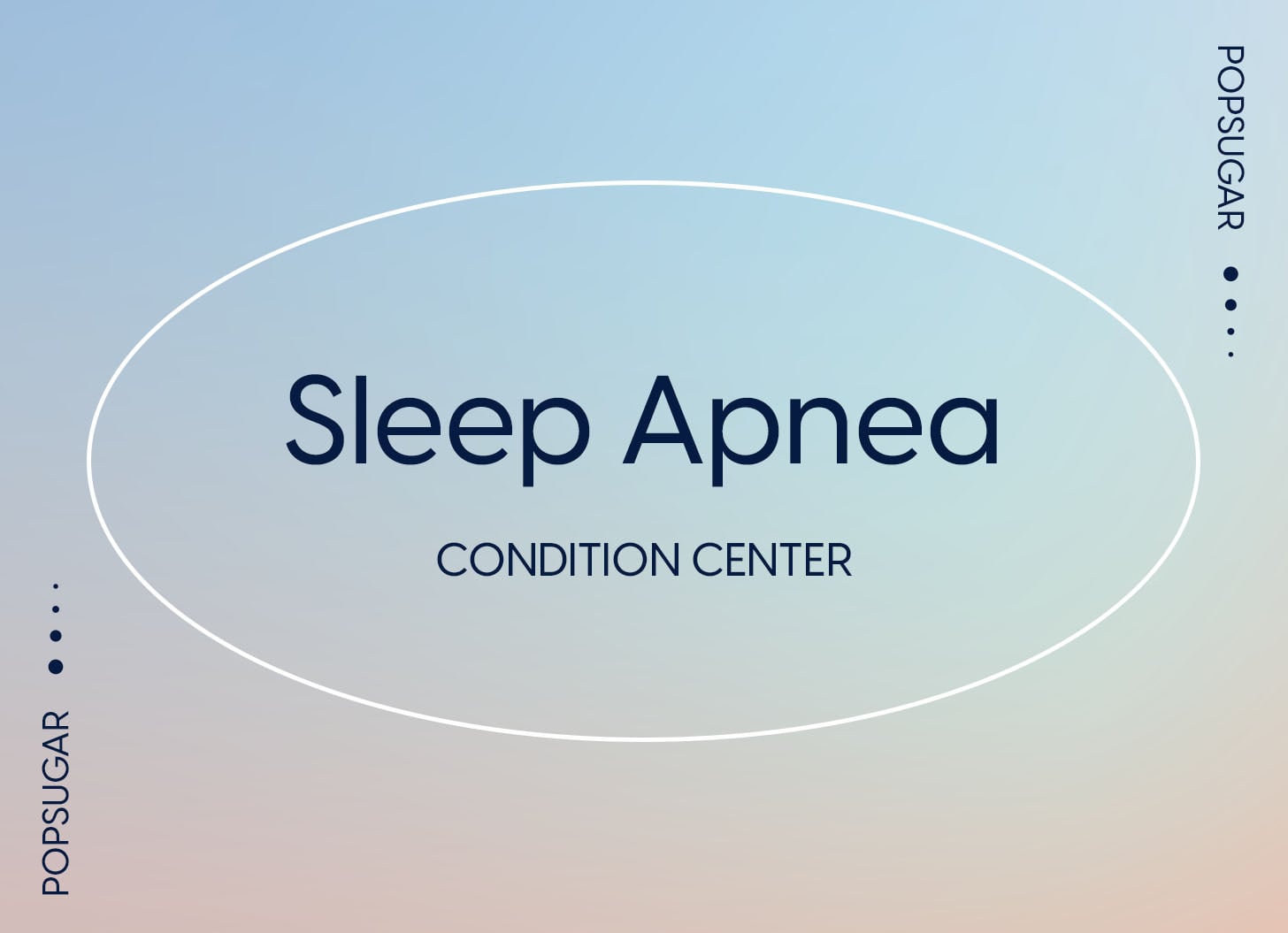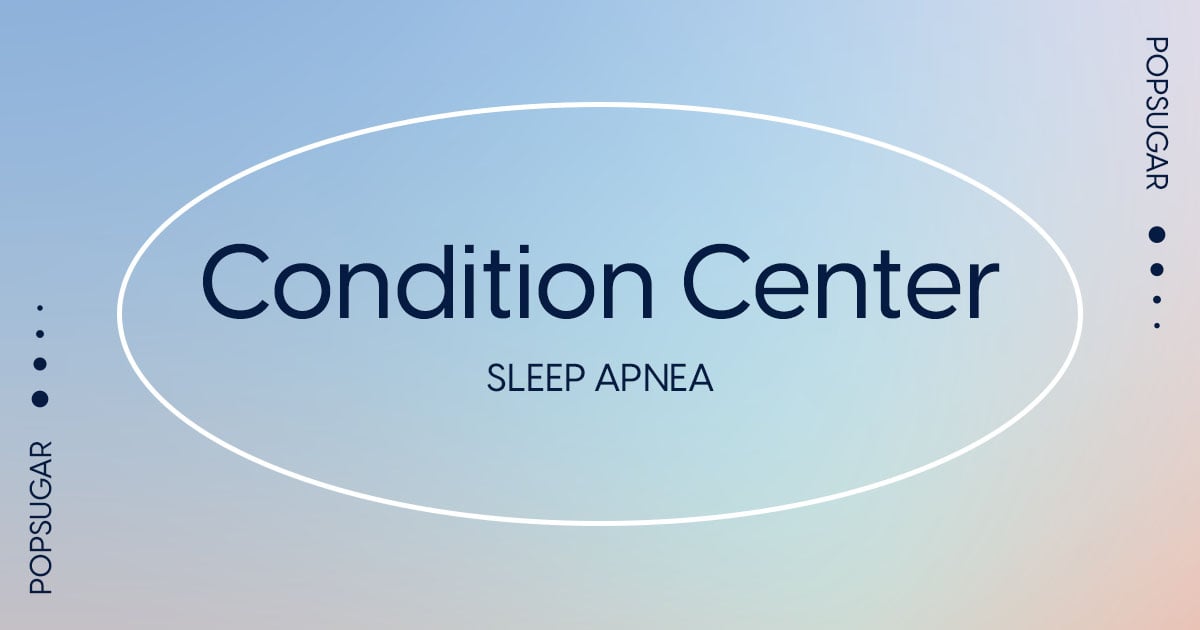Products You May Like

This informational guide, part of POPSUGAR’s Condition Center, lays out the realities of this health concern: what it is, what it can look like, and strategies that medical experts say are proven to help. You should always consult your doctor regarding matters pertaining to your health and before starting any course of medical treatment.
More than 29 million Americans have sleep apnea, according to the American Academy of Sleep Medicine. In fact, President Joe Biden, is one of them, as confirmed by White House officials in June. Sleep apnea can cause a range of symptoms, from snoring to fatigue, making it tough for the average person to pin down the signs or even to realize that they have a health issue. It’s part of the reason the condition is often under-diagnosed, according to the National Heart, Lung, and Blood Institute.
“Most sleep apnea sufferers are unaware that they are suffocating,” says neurologist and sleep specialist W. Chris Winter, MD, author of “The Sleep Solution” and host of “Sleep Unplugged With Dr. Chris Winter.” While sleep apnea can’t usually be cured, it is treatable. Here’s how to know if you have it, and what comes next.
Understanding Sleep Apnea
On a basic level, sleep apnea is when your breathing stops and starts at different periods during the night, Dr. Winter explains. There are two main types of sleep apnea, per the National Heart, Lung, and Blood Institute (NHLBI):
- Obstructive sleep apnea. This is what happens when your upper airway becomes blocked many times while you sleep, reducing or stopping airflow.
- Central sleep apnea. This can happen when your brain doesn’t send signals that you need to breathe.
“Obstructive sleep apnea is what most people think of when they hear the term ‘sleep apnea,'” says Paul Chung, DO, a clinical instructor in sleep medicine at Northwestern Medicine.
Signs and Symptoms of Sleep Apnea
Snoring can be a common symptom of sleep apnea, but “not everyone who snores has sleep apnea,” Dr. Winter says. The NHLBI lists the following as major symptoms of obstructive sleep apnea:
- Breathing that starts and stops during sleep
- Frequent loud snoring
- Gasping for air during sleep
- Daytime sleepiness and tiredness
- Dry mouth or headaches
- Sexual dysfunction or decreased libido
- Waking up often during the night to pee
- Uncontrolled or elevated blood pressure
The snoring caused by obstructive sleep apnea is usually distinct. “Sometimes it causes a big, dramatic gasp because the airway has closed off altogether,” says Kelly Waters, MD, a sleep medicine specialist and neurologist with Corewell Health. “Sometimes it’s just significant shallowness.” Weight gain, high blood pressure, and excessive sleepiness can also indicate sleep apnea, Dr. Winter says.
Causes of Sleep Apnea
There are a few potential causes of obstructive sleep apnea. “Essentially, the blockage occurs at the back of the throat where the soft tissue of the mouth and the tongue collapse, making it difficult to inhale while you sleep,” Dr. Chung says.
But the causes for that obstruction can vary. “The upper-airway collapse can be anatomical — big tonsils or large tongue, or perhaps a small airway to begin with,” Dr. Winter says. Weight can be a factor in some cases, but certainly not in all, he adds.
Sleeping on your back, having a thick neck, and drinking alcohol or sedatives at night can also influence sleep apnea, along with hormones, Dr. Winter says. And “women are at far more risk for sleep apnea post-menopause,” he adds.
The Most Effective Treatments For Sleep Apnea
“The only way to know whether or not you have obstructive sleep apnea is through a sleep study,” Dr. Chung says. This can be done at home or in a sleep lab. But once your sleep apnea is confirmed, your healthcare provider can work toward creating a treatment plan.
Doctors stress that the most effective treatment for sleep apnea is using a continuous positive airway pressure (CPAP) machine. “A CPAP machine delivers pressure that splints the airway open and prevents your upper airway from collapsing and causing a blockage while you sleep,” Dr. Chung says. “The pressure is delivered from the CPAP machine through a tube, then through a mask that is fitted onto your face.”
But while a CPAP machine is the most effective treatment, not everyone feels comfortable with the mask or the pressure it generates. “But the payoff is worth it,” Dr. Chung says. “I’ve had patients who were really reluctant to use CPAP, but after they slept with it, they felt so good that they now tell me that they can’t sleep without it,” he says.
There are other options, though. One is oral appliance therapy (OAT), which uses a dental device called a mandibular advancement device to pull your lower jaw forward while you sleep to help relieve the blockage. “This treatment is mostly effective for mild obstructive sleep apnea and tends to be less effective for moderate or severe obstructive sleep apnea,” Dr. Chung says. Important to note, per Dr. Chung, is that these devices are made by dentists and are different from commonly sold heat-molded mouth guards that you can buy online. “Those are not as effective in treating obstructive sleep apnea, though some may help with snoring,” Dr. Chung says.
Another possible treatment is positional therapy, which involves training yourself to sleep on your side if sleep apnea is worse when you sleep on your back. One method that Dr. Chung recommends using is sewing a sock stuffed with tennis balls onto the back of your pajamas. “The sock with the tennis balls would either prevent you from sleeping on your back or wake you up to reposition yourself if you roll onto your back,” Dr. Chung explains. Another method is to use a wedge pillow so that you can’t roll onto your back at night.
If none of those solutions work, your doctor may suggest hypoglossal nerve stimulation — which is significantly more intense. “You would need to see an ENT doctor to have this device surgically placed in the right side of your chest,” Dr. Chung says. “The device looks like a pacemaker and it has two leads — a sensing lead that senses when you breathe and a stimulation lead which stimulates the hypoglossal nerve.” This stimulation causes the muscles in your upper airway to contract, keeping your airway open each time you breathe while you sleep, he explains.
Ultimately, if you suspect that you have sleep apnea, flag it to a medical professional — either your general practitioner or a sleep specialist. They’ll be able to help you find your way toward a more restful and healthy sleep.
Image Source: Photo Illustration by Ava Cruz
